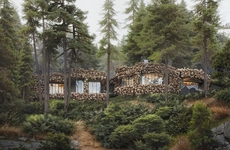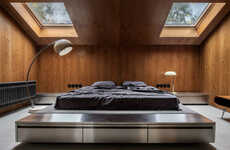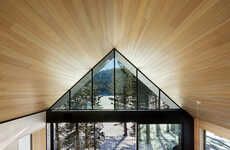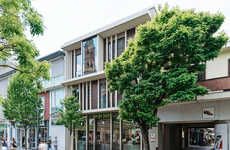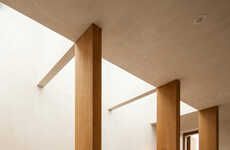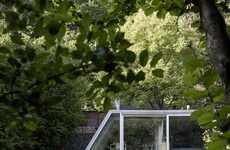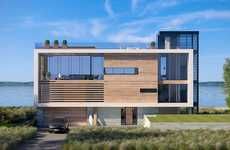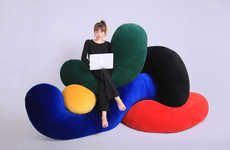
'Habitation Lecoq' Features a Wood Facade That Looks Like Concrete
Joey Haar — March 9, 2018 — Art & Design
References: archdaily
Wood is often a material used for traditional buildings (or those looking to emulate a traditional design), but 'Habitation Lecoq' uses the natural material in a unique and modern way. Rather than having the wood signify age, naturality, and tradition, Habitation Lecoq's facade is covered in dyed larch that looks almost like concrete.
The concrete appearance of the house in Belgium is only furthered by its form as a whole. With a rigidly boxy layout consisting of two overlapping volumes, the home is typical of what one might expect from a modernist, concrete abode, taking clear cues from the gestures of Brutalism. However, the use of wood cleverly upends the core principle of that architectural style, making Habitation Lecoq a statement about aesthetics as much as it is a place for living.
Image Credit: Laurent Brandajs
The concrete appearance of the house in Belgium is only furthered by its form as a whole. With a rigidly boxy layout consisting of two overlapping volumes, the home is typical of what one might expect from a modernist, concrete abode, taking clear cues from the gestures of Brutalism. However, the use of wood cleverly upends the core principle of that architectural style, making Habitation Lecoq a statement about aesthetics as much as it is a place for living.
Image Credit: Laurent Brandajs
Trend Themes
1. Wood-concrete Hybrid - The use of dyed larch that looks like concrete on the facade of 'Habitation Lecoq' presents an opportunity to explore the hybridization of wood and concrete materials in architecture.
2. Modernist Reimagining - The blending of traditional wood material with modernist design cues in 'Habitation Lecoq' demonstrates an opportunity to reimagine and modernize traditional building styles.
3. Disruptive Aesthetics - The unconventional use of wood to mimic concrete in 'Habitation Lecoq' challenges commonly-held notions of visual aesthetics in architecture, paving the way for innovative and disruptive design approaches.
Industry Implications
1. Architecture - The 'Habitation Lecoq' facade's innovative wood-concrete hybrid design presents opportunities for architects to push the boundaries of traditional building materials and create unique structures.
2. Construction - The use of dyed larch that resembles concrete on the facade of 'Habitation Lecoq' opens up possibilities for construction companies to experiment with new materials and offer clients unconventional design options.
3. Interior Design - The modernist reimagining of traditional wood material in 'Habitation Lecoq' provides interior designers with an opportunity to explore innovative ways to combine natural and industrial elements within living spaces.
3.2
Score
Popularity
Activity
Freshness


